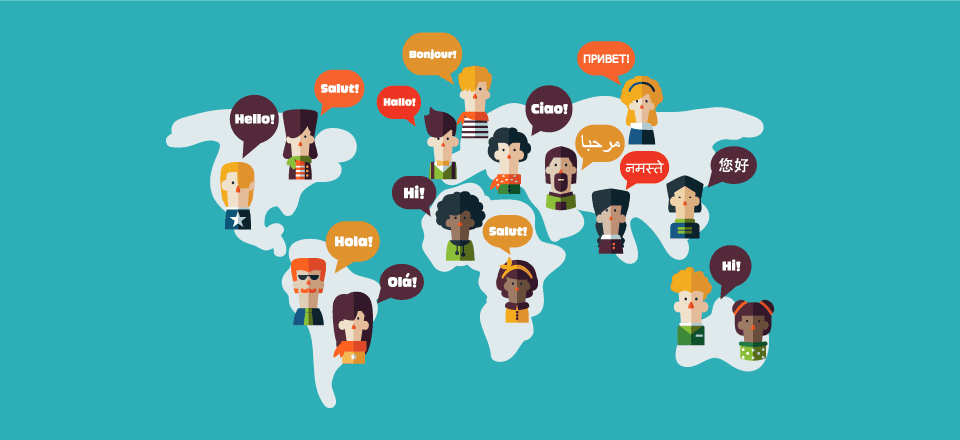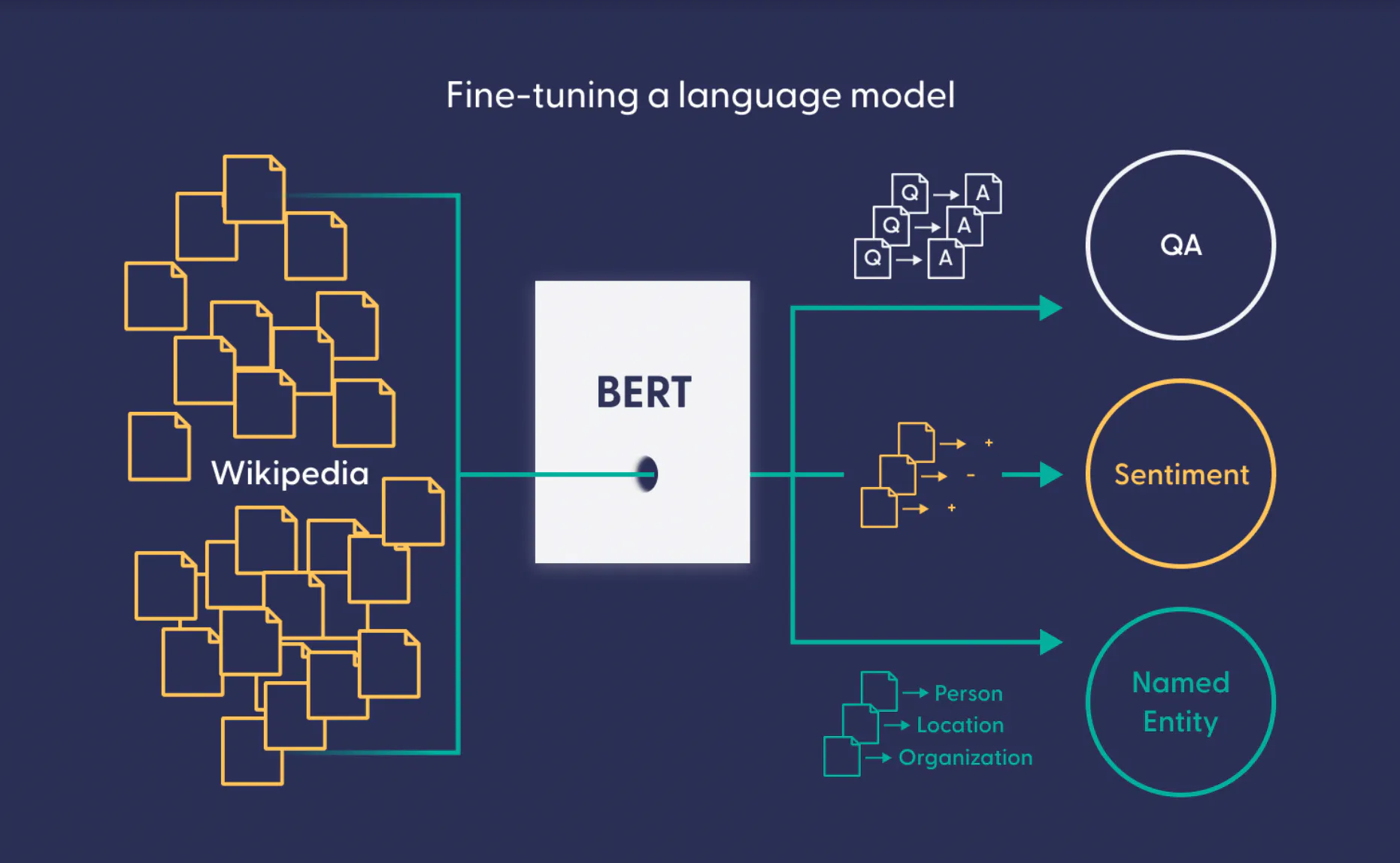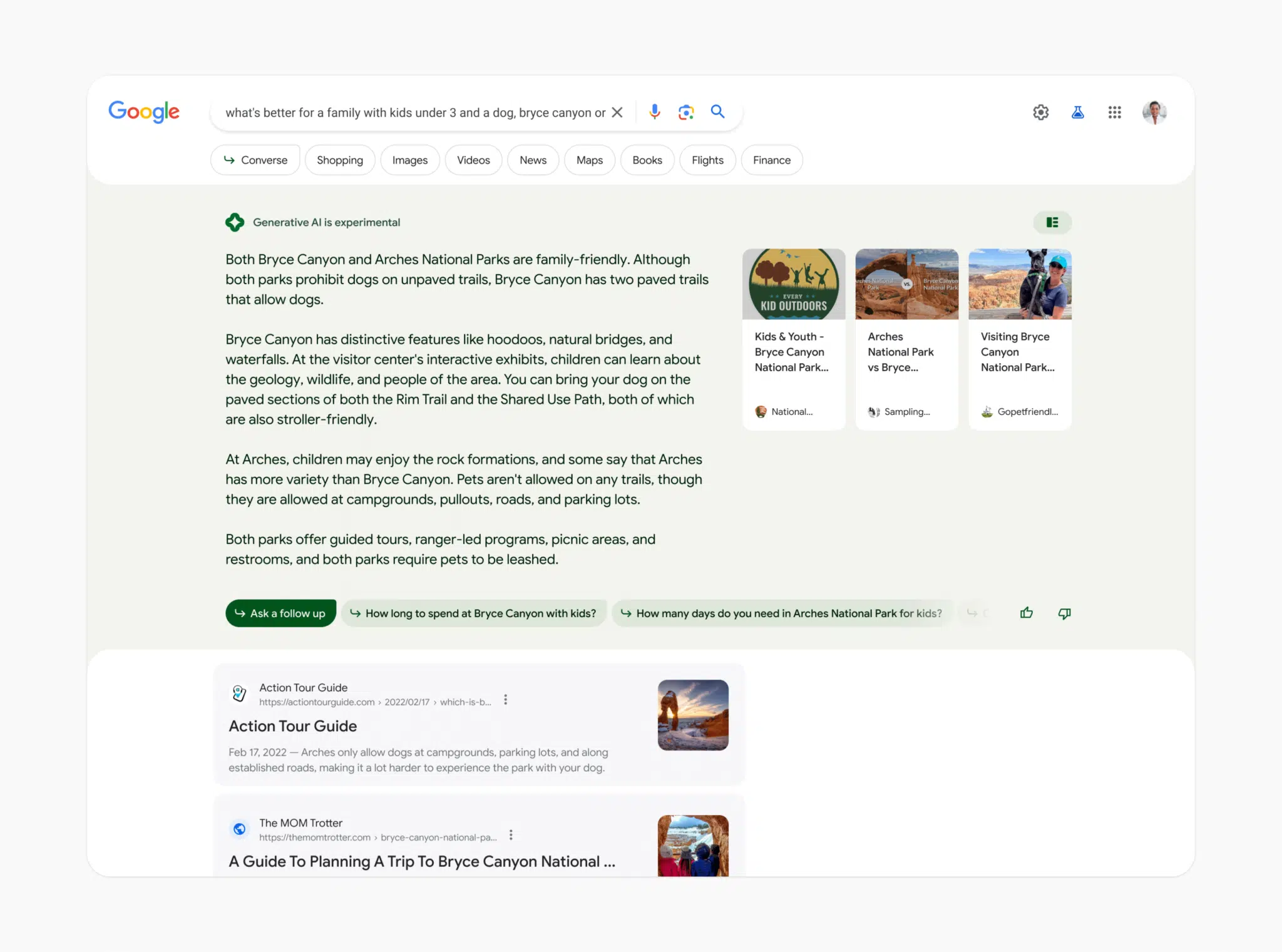14 min to read
Multilanguage SEO’s Future: Powerful predictions for 2024

Multilanguage SEO predictions
As we look towards 2024, the landscape of digital marketing continues to evolve, with multilingual SEO emerging as a pivotal strategy for global businesses. Globally, it has emerged as a necessity for brands to effectively optimize web content across diverse languages. This necessity stems from the growing digital inclusivity and the expansion of internet accessibility across non-English speaking regions. Multilanguage SEO, therefore, stands at the forefront of this evolution, offering an opportunity for businesses to reach a broader, more diverse audience.
The future of multilanguage SEO is not just about transcending language barriers but about embracing cultural nuances, local trends, and regional search behaviors. As we move into 2024, we anticipate powerful predictions that will reshape the way businesses approach SEO, making it more sophisticated, inclusive, and aligned with the dynamic needs of a global audience. These predictions will likely encompass advancements in AI-driven language processing, localized user experience optimization, and an increased focus on voice and visual search compatibility in multiple languages.
Understanding and adapting to these changes will be crucial for businesses looking to maintain a competitive edge in a digital landscape where global reach and local relevance go hand in hand. Below are the 10 powerful SEO predictions to look for in 2024:
Adaptation of Predictive language modeling in SEO

Predictive language modeling in SEO
As we move into 2024, Predictive Language Optimization is poised to revolutionize multilanguage SEO strategies for global businesses. This advanced approach involves leveraging artificial intelligence (AI) and machine learning (ML) technologies to not only analyze current linguistic trends but to predict future changes and emerging patterns in language used across different regions and cultures.
With the help of AI algorithms, companies will be able to sift through vast amounts of data from multiple online platforms, including social media, forums, and local news outlets. This data, rich in colloquialisms and emerging language patterns will provide invaluable insights into how language will evolve in specific regions.
Predictive modeling, the new advancement will help businesses in forecasting language trends. For instance, a new slang term or colloquial phrase that's gaining traction in a particular region can be identified before it becomes mainstream. This foresight will enable companies to adapt their SEO strategies proactively, ensuring their content remains relevant and resonant with the target audience.
Hyper-Localized Content Strategies
"Hyper-localized Content Strategies," involves creating content that deeply resonates with specific local cultures and trends, especially in regions with rapid changes and diverse cultures, like Southeast Asia and Africa. This strategy goes beyond simply translating text into different languages. It's about understanding and reflecting the unique cultural nuances, local dialects, and specific trends of each area.
For example, a marketing campaign in Thailand might include references to local festivals or popular Thai social media influencers, while content for a Nigerian audience could incorporate regional slang and address locally trending topics. This approach requires in-depth research and a keen understanding of each local market, ensuring that the content feels as it was originally created for that specific audience, not just translated.
Hyper-localized content strategies are crucial because they help businesses connect more authentically with their target audience in different regions. This fosters trust and engagement, as the audience feels that the company truly understands and values their unique culture and lifestyle.
Zero-click searches
Zero-click searches, where users get their answers directly from the search engine results pages (SERPs), are increasingly relevant in the SEO landscape, particularly with the expected trends of 2024. As search engines evolve to provide more direct answers and rich snippets, businesses need to optimize their content for these features to maintain visibility. This shift may result in reduced traditional click-through rates, highlighting the importance of featured snippets and quick answers.
Furthermore, with the rise of voice search and personalized, hyper-localized results, SEO strategies must adapt to focus on local SEO and voice search optimization. These queries tend to be more conversational and long-tail, requiring a different approach to content creation and optimization.
The emphasis on quality and authority over quantity is paramount. Search engines are prioritizing high-quality, authoritative content for zero-click answers, making it crucial for businesses to produce accurate, concise, and trustworthy information.
Google Search Generative Experience(SGE)

Google SGE
The Google Search Generative Experience (SGE) is an innovative advancement in search technology, integrating AI-powered features to enhance user interaction. It has expanded internationally to over 120 countries, including regions in Latin and South America, sub-Saharan Africa, and Asia Pacific, and now supports multiple languages like Indonesian, Korean, Portuguese, and Spanish, along with English, Hindi, and Japanese.
A key feature of SGE is the ability for users to ask follow-up questions directly from the search results page, allowing for more refined searches based on initial queries. Additionally, SGE improves translation accuracy by highlighting words with multiple meanings, enabling users to select the specific interpretation they intend. Another notable feature is the provision of interactive definitions for various educational topics such as science, economics, and history. Users can hover over highlighted words to see their definitions and related imagery, making the search experience more informative and educational.
Adoption of Multilanguage Content Management Systems (CMS)
The "Adoption of Multilanguage Content Management Systems (CMS)" is a trend that recognizes the increasing importance of delivering content in multiple languages to cater to a global audience.
Multilanguage CMS platforms are specifically designed to manage and display content in various languages. They simplify the process of translating and localizing content, ensuring that each version maintains the essence and accuracy of the original. This includes not only textual content but also images, videos, and other media that might require localization.
Key features of multilanguage CMS include language-specific SEO capabilities, streamlined translation workflows, and the ability to maintain a unified brand voice across different languages. These systems often integrate with translation services and have tools to manage cultural nuances, ensuring that content is both linguistically and culturally appropriate.
For businesses, adopting a multilanguage CMS is about more than just translation. It's about creating a seamless, coherent experience for users in their native language, which can significantly enhance user engagement and brand loyalty.
As we look towards 2024, the adoption of multilanguage CMS will likely become a standard practice for businesses seeking to maximize their international impact, ensuring that their digital content is accessible, relevant, and engaging for audiences worldwide.
Localized keyword research
The importance of localized keyword research and content creation, especially in the context of international SEO trends for 2024, is pivotal for businesses aiming to establish a global online presence.
Localized keyword research involves identifying and targeting keywords that are specifically relevant to local audiences. This goes beyond mere translation; it's about understanding the local colloquialisms, search habits, and cultural nuances that influence how people search in different regions. As search engines become more sophisticated, they're increasingly prioritizing content that resonates with local search intents and behaviors.
Hreflang tags
Hreflang tags are a critical SEO tool for websites offering content in multiple languages or targeting different geographic regions. These tags are snippets of code that inform search engines about the language and geographic targeting of a webpage. For example, they differentiate between English content intended for the US audience and that for the UK audience, guiding search engines to display the appropriate version based on the user’s location and language settings.
Looking towards 2024, hreflang tags are becoming increasingly important due to several factors:
- Global Expansion of Businesses: With more businesses operating internationally, accurately serving content in various languages is vital. Hreflang tags ensure users are directed to the relevant content for their region and language.
- Enhanced User Experience: These tags improve user experience by providing tailored content, aligning with the trend of personalized online experiences.
- Preventing Duplicate Content Penalties: They help search engines understand that similar content in different languages or for different regions is not duplicate but region-specific, which is crucial for SEO integrity.
- Adapting to Search Engine Advances: As search engines evolve to better recognize and value localized content, hreflang tags aid in effectively navigating and indexing such content.
Optimization of voice search in multilingual SEO
The proliferation of voice search in non-English languages is a significant trend, especially as voice assistants gain global popularity. As these technologies become more prevalent, the need to optimize for voice search in various languages is becoming crucial. This is not just about translating content into different languages, but understanding and incorporating the nuances of how people naturally speak in those languages.
Voice search queries tend to be more conversational and can vary significantly from traditional text-based searches. For example, the way questions are phrased in Spanish or Mandarin may differ greatly from English, both in structure and colloquialisms. This requires a deep understanding of linguistic nuances and cultural contexts. Optimizing for voice search in multiple languages involves tailoring content to these nuances, ensuring that voice search algorithms can accurately interpret and deliver relevant results. This includes using natural, conversational language and considering local dialects and idioms.
As voice search technology continues to advance and become more integrated into daily life, its impact on SEO strategies will grow, making it essential for businesses to adapt their digital marketing strategies to accommodate voice search in multiple languages.
Focus on Cross-Regional Link-Building Strategies
As businesses expand their digital footprint globally, a one-size-fits-all approach to link-building no longer suffices. The focus in 2024 is on cultivating backlinks that not only boost SEO but also resonate with local audiences in different regions. This means prioritizing links from websites that are authoritative within specific countries or areas, thereby signaling to search engines the regional relevance of your content.
This strategy also involves a nuanced understanding of the local digital landscape. For instance, a link from a popular blog in Germany might carry more weight for a European audience than a general international link. Similarly, a backlink from a well-known eCommerce platform in Southeast Asia could significantly enhance visibility and credibility in that market.
Moreover, the content surrounding these links needs to be culturally and contextually appropriate. It's not just about placing a link; it’s about embedding it within content that speaks to the local audience's interests, needs, and cultural nuances. This approach not only satisfies search engines but also fosters genuine engagement with the target demographic.
Partner up with Local level influencers to boost SEO traffic in 2024
Local influencers often have a strong connection with their audience. Their endorsement can lend credibility and relatability to your brand, making your content more appealing and relevant to the local market. Collaborating with influencers allows for the creation of content that resonates deeply with specific locales. This localized content is more likely to rank higher in search engines for region-specific queries, tapping into local search trends and preferences.
Additionally local level influencer partnerships often lead to increased social media engagement, which search engines may consider as a factor in ranking. This heightened social activity can drive more traffic to your site.
Bottom Line
As we look towards 2024, the future of multilanguage SEO is poised for transformative growth, driven by technological advancements and a deeper understanding of global audiences.
Businesses must embrace these changes, leveraging AI-driven tools, localizing content effectively, and adapting to new search behaviors to stay competitive in the global market. By focusing on these key areas, organizations can ensure that their digital presence resonates across different languages and cultures, leading to enhanced visibility and engagement. The future of SEO is not just about keywords and backlinks; it's about creating a meaningful, culturally connected, and technologically advanced online experience for users worldwide.
FAQS - Frequently Asked Questions
What is predictive language optimization in SEO, and how does it benefit multilingual websites?
Predictive language optimization in SEO is an advanced technique that involves using data analytics and machine learning models to anticipate and respond to future search trends and keyword usage before they become widely recognized. This approach allows marketers to optimize content based on predictions about how language and search terms will evolve over time, particularly in response to cultural shifts, technological advancements, and emerging industry trends. For multilingual websites, predictive language optimization is especially beneficial as it enables these platforms to adapt more dynamically to the nuances and changes in language use across different regions. By anticipating the specific terms, phrases, and questions that target audiences in various languages are likely to use in their search queries, businesses can create highly relevant and optimized content that ranks better in search engine results pages (SERPs). This not only enhances visibility across diverse linguistic markets but also improves user engagement by providing content that resonates more closely with the cultural and linguistic context of each audience. An example of predictive language optimization in action would be a travel website that anticipates and creates content around emerging travel destinations or trends specific to each language group it targets, thereby staying ahead of competitors in SERP rankings.
How can businesses implement hyper-localized content strategies effectively across different regions?
Implementing hyper-localized content strategies effectively across different regions requires a deep understanding of the local culture, language nuances, consumer behavior, and search intent in each target area. Businesses should start by conducting thorough market research to gather insights about local preferences and trends. This involves analyzing local search terms, social media conversations, and consumer feedback to tailor content that resonates with each specific audience. Utilizing advanced data analytics and local SEO tools can help identify hyper-local keywords and content themes that are most relevant to each region.
Moreover, engaging with local content creators, influencers, and marketing professionals can enhance the authenticity and relevance of the content. These local experts can provide invaluable insights into the regional nuances that might not be apparent to outsiders. For example, Codedesign has successfully implemented hyper-localized content strategies for its clients by leveraging local market data and collaborating with regional experts to ensure that the content is culturally and linguistically tailored to each target audience.
Additionally, businesses should utilize geo-targeting features within their Content Management Systems (CMS) and search engine optimization efforts to ensure that the right content reaches the right audience. This includes setting up separate web pages or sections for different regions, using local languages, and optimizing for local search engines and directories.
Effective hyper-localization also involves continuous monitoring and adaptation of content strategies based on local feedback and performance metrics. This iterative approach allows businesses to refine their content and targeting strategies to better meet the needs and preferences of each local market, driving higher engagement and conversion rates.
In the context of SEO, what are zero-click searches, and how should companies adapt?
Zero-click searches refer to search engine queries that are answered directly on the search results page (SERP) without requiring the user to click through to a website. This can happen through featured snippets, knowledge graphs, local packs, and other SERP features that provide quick answers or information. While zero-click searches can improve the user experience by delivering information quickly, they also present a challenge for companies relying on website traffic for business outcomes.
To adapt to the growing prevalence of zero-click searches, companies should focus on optimizing their content to increase visibility in these SERP features. This involves structuring content in a way that is likely to be featured in snippets or knowledge panels, such as using clear, concise answers to common questions, employing bullet points or lists, and including high-quality, relevant images.
Additionally, businesses should also diversify their online presence beyond their website. This includes optimizing Google My Business listings for local SEO, engaging on social media platforms, and publishing content on other authoritative platforms where potential customers might be looking for information. By doing so, companies can ensure that even if users do not click through to their website, they still achieve brand visibility and engagement.
Codedesign, for instance, recommends clients to embrace a holistic digital marketing strategy that goes beyond traditional search engine optimization. By focusing on building a strong brand presence across various digital channels, businesses can mitigate the impact of zero-click searches and continue to drive engagement and conversions through alternative means.

Add comment ×